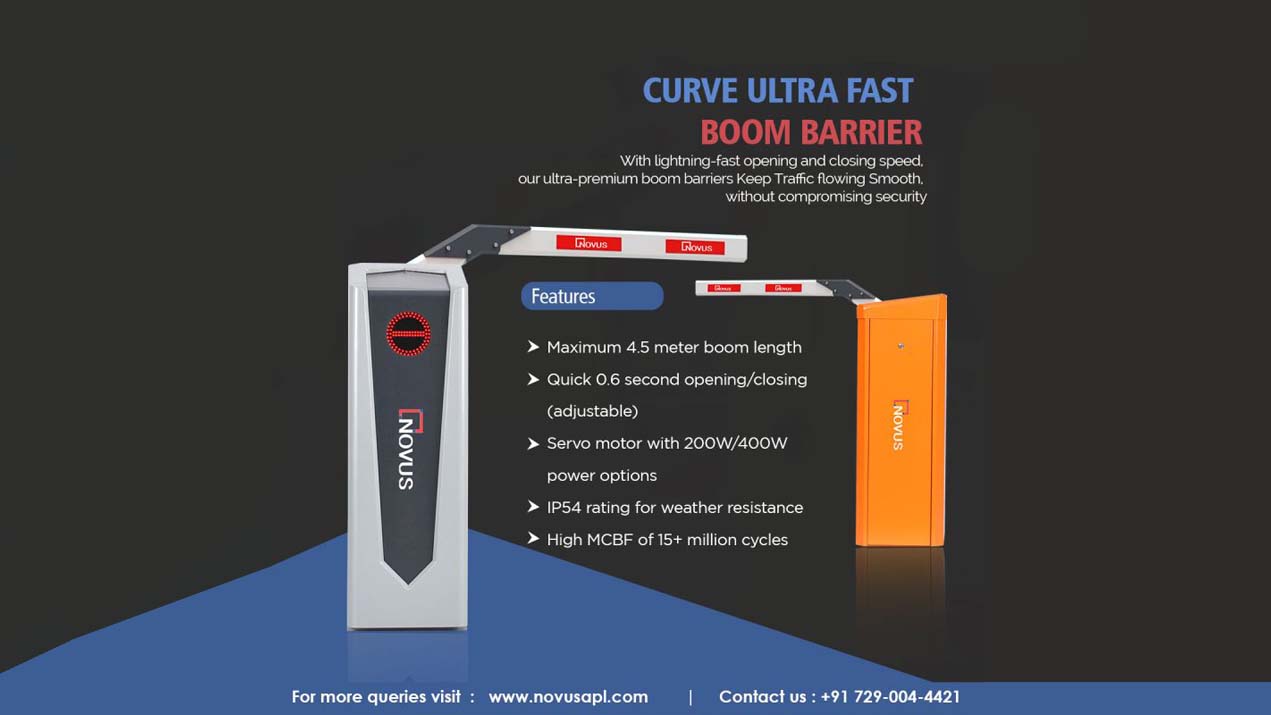
1) Securing Access: A Guide to Electronic Boom Barriers Introduction
2) What are Electronic Boom Barriers?
3) Components of an Electronic Boom Barrier System
Electronic boom barriers, also known as boom gates, are automated systems that control the flow of vehicles into and out of specific areas. They consist of a long, horizontal arm that can be raised or lowered to block or allow passage. Electronic boom barriers are commonly used in parking lots, gated communities, toll plazas, and other areas where vehicle access needs to be controlled. Brief explanation of the importance of access control and security.
Electronic boom barriers , also known simply as boom barriers, are physical security devices used to control vehicular access to a specific area. These barriers consist of a horizontal metal bar or boom that blocks the passage of vehicles. The boom is typically mounted on a pivoting pole, and it can be raised or lowered electronically to allow or restrict access.
An electronic boom barrier system is a security device used to control the entry and exit of vehicles at various locations such as parking lots, toll booths, residential complexes, and industrial facilities. The system typically consists of several components that work together to manage vehicle access. Here are the key components of an electronic boom barrier system.
Electronic boom barriers offer a number of benefits over traditional methods of vehicle access control, electronic boom barriers are more secure than traditional swing gates because they are less susceptible to being forced open.
When selecting an electronic boom barrier system, it is important to consider the following factors:
Electronic boom barriers are a versatile and effective way to control vehicle access. They offer a number of benefits over traditional methods of vehicle access control, making them a popular choice for a wide variety of applications.
An electronic boom barrier is a motor-driven gate with a horizontal arm that automatically raises or lowers to control vehicle access. It enhances security by preventing unauthorized entry, regulating traffic flow, and providing controlled access monitoring at parking lots, industrial sites, gated communities and toll plazas.
Boom barriers operate using an integrated motor, controller unit and access automation devices. When a vehicle is authenticated through RFID, remote, ANPR camera, QR code, or push button, the control unit sends a signal to lift the arm. Advanced barriers include safety sensors that prevent accidental impacts and ensure smooth operation.
Electronic boom barriers are available as automatic, semi-automatic, springless, ultrafast and crash-rated variants. They are designed for specific environments such as high traffic tolls, parking exits, warehouses, and secure perimeter areas requiring stronger protection.
Electronic boom barriers are widely used in parking facilities, corporate business parks, airports, metro and railway stations, hospitals, stadiums, industrial zones, government offices, and gated housing communities to manage vehicular movement and enhance security operations.
Modern boom barriers include features such as infrared sensors, photocell sensors, emergency stop functionality, soft open-close motors, auto-reverse on obstacles and reflective LED indicators. These ensure pedestrian and vehicle safety even in low visibility or rush hour conditions.
Boom arms are made from aluminum alloy, GI-coated steel or carbon fiber for high strength and corrosion resistance. Weather-proofing and strong construction ensure the arm withstands heavy usage and tough outdoor conditions over long operational lifespans.
Standard boom barriers take 3 to 6 seconds to lift fully, while ultrafast models open in around 1 second. This reduces queuing and congestion, making them ideal for toll booths and high-volume parking lanes with continuous traffic flow.
Electronic boom barriers support UPS or battery backup for uninterrupted functioning. They can also be configured to automatically open or remain locked depending on security requirements, and include a manual release mechanism for emergency access.
Turnstiles require a proper foundation, electrical power source, data connectivity, and appropriate clearance for smooth pedestrian movement. Planning integration points in advance ensures proper alignment with access control devices.Yes, they can integrate with RFID readers, long-range UHF tags, ANPR license plate cameras, intercoms, biometrics, payment kiosks and complete parking management software. This automation improves efficiency and eliminates manual intervention.
Selection depends on traffic volume per hour, lane width, opening speed, environment conditions, safety requirements, vehicle types and integration needs. Industrial zones may need heavy-duty models, while residential spaces prefer standard automated series.
Routine maintenance includes checking arm balancing, lubricating components, testing safety sensors and tightening hardware. Springless models offer reduced wear and require less servicing, ensuring consistent performance over a longer lifespan.
Yes. They reduce the need for manual gatekeeping, prevent unauthorized vehicle entry, streamline parking operations and enhance property security. The low maintenance and robust construction deliver long-term operational savings.
Accelerate Your Business with Novus Automation
Become a Partner